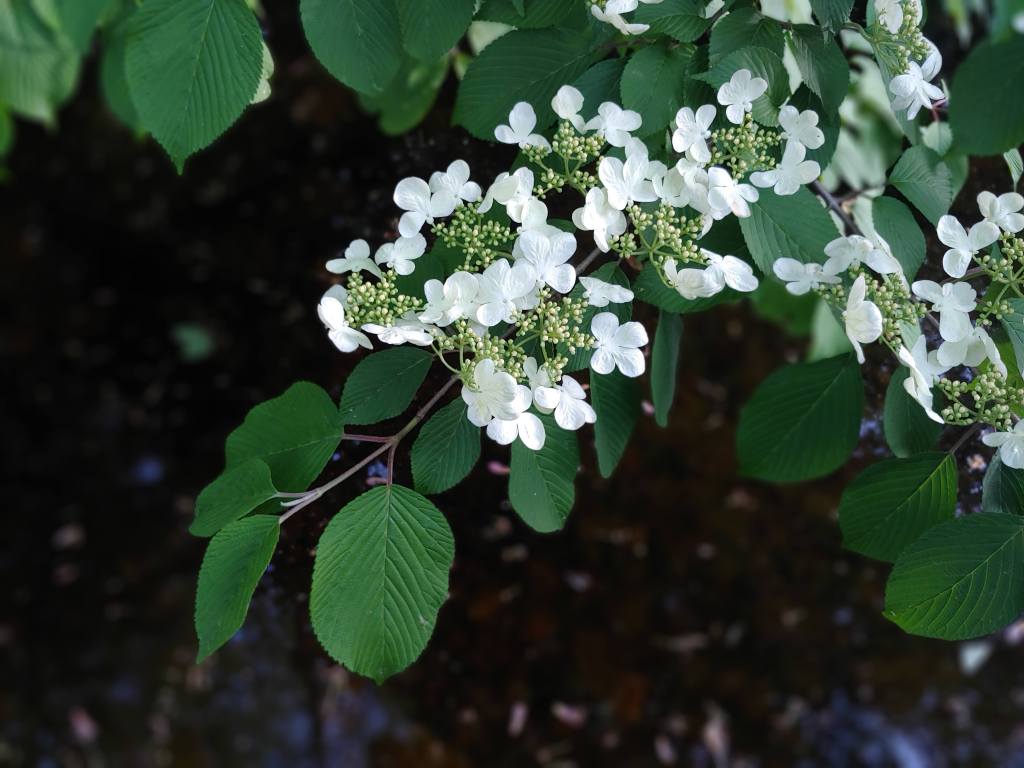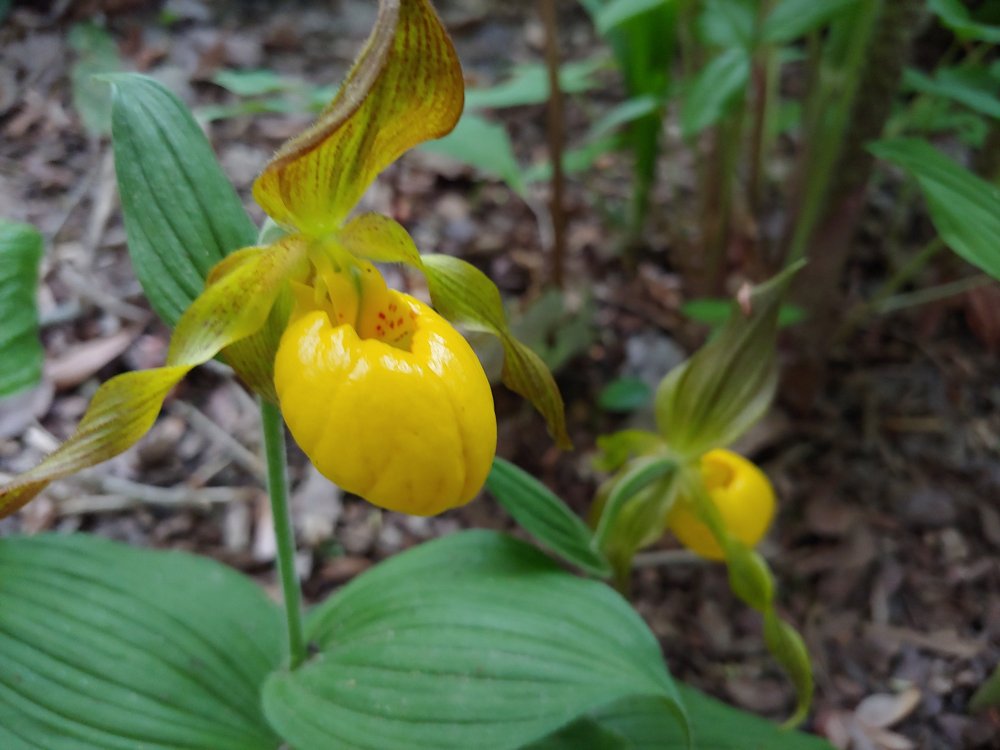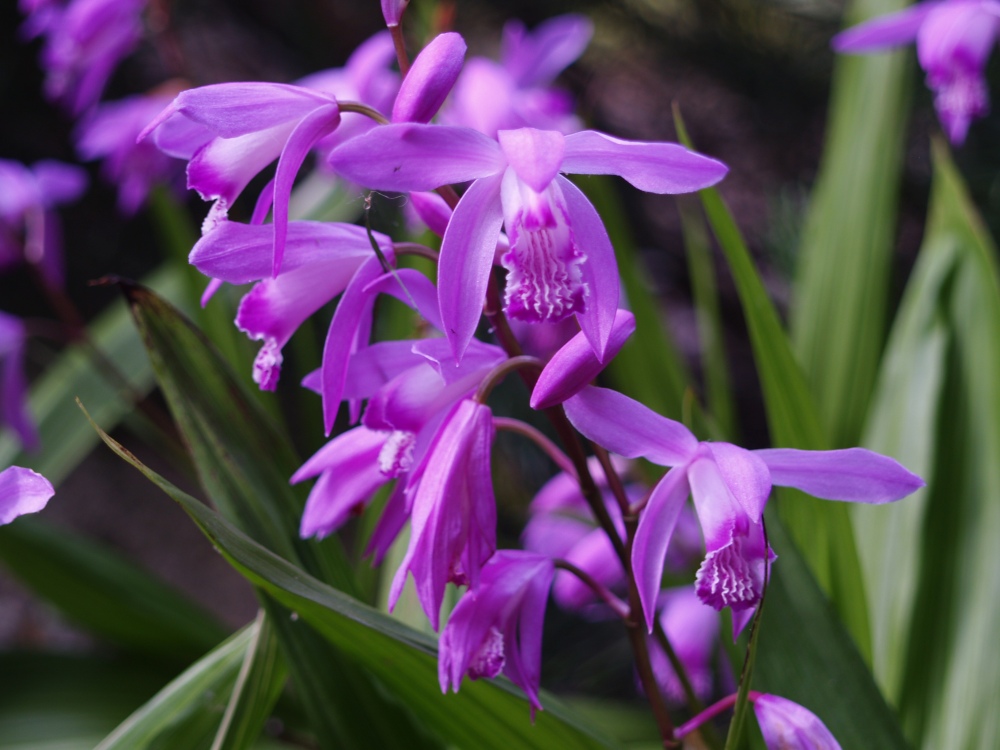From our kitchen window, a mass of white blooms shows from behind three huge maples at the forest’s edge. This is the old, dependable Delaware Valley White azalea (below) planted thirty years ago, and now it spreads ten feet or more in deep shade. Through most of the year it is hardly noticed except that the shrub guides neighborhood kids around its girth on their trail through our narrow sliver of forest.

There is nothing extraordinary about this white azalea, but my wife and I look forward to viewing a procession of blooms as we peruse the morning’s news in the kitchen on Sunday mornings. Magnolias in March transition to serviceberry (Amelanchier), then to the silverbell (Halesia), a wide spreading Maresi viburnum (Viburnum plicatum tomentosum ‘Mariesii’, below), and now the Delaware Valley azalea. Of course, there are many more flowers in the garden, and May is the garden at its prime.

I am quite pleased with the various orchids in the garden, though disappointed that a pink flowered lady slipper did not return after putting on a glorious show a year ago. While the demands of lady slippers are still somewhat mysterious to me, two yellow flowered lady slippers (Cypripedium parviflorum, below) are blooming with two others still too young, but with excellent growth.


Both calanthe (Calanthe discolor, above) and Chinese ground orchids (Bletilla striata, below) are easy, and both have spread enough that I’ve dug and shared divisions for our sons’ gardens. I don’t recall where these were purchased, but they are found occasionally in the garden centers and readily from online sources. While lady slippers can be prohibitively expensive, the ground orchids are only moderately pricey. But, the initial investment is paid back in multiples by plants that expand noticeably each year.

Native Putty Root (Aplectrum hyemale), cranefly (Tipularia discolor), and showy orchids (Galearis spectabilis, below) are more particular. Squirrels dug up the small colony of craneflies in autumn, but the showy orchids return for their third year so I must have stumbled upon the correct formula. All orchids are planted prominently, and though none can be seen from the kitchen window, their flowers are worth the stroll.

I love my Delaware white azalea but it is annual battle keeping the deer from eating them
Deer are a problem with other azaleas but for whatever reason not Delaware White. Much of it is taller than deer prefer.